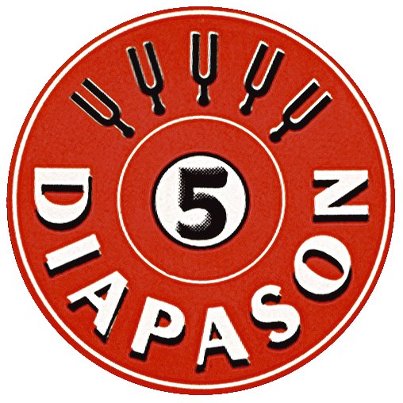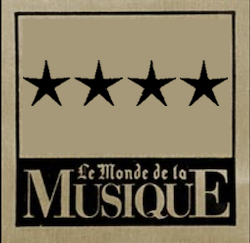MR Children’s Choir, MR Choir, Ádám Fischer Zoltán Kodály: Choral works
On 1 December 1924 for the first time Zoltán Kodály’s Psalmus Hungaricus was performed in a version which also featured a children’s choir. Possibly it was this experience that aroused the composer’s interest in this type of ensemble. In February 1925 he encountered the choir of the boys’ school in Wesselényi utca in Budapest, led by Endre Borus, and at their folksong recital on 2 April the ensemble performed the two children’s choruses, Víllő (The Straw Guy) and Túrót eszik a cigány (See the Gypsies munching cheese), written specially for them. This was a significant turning point in Kodály’s career: though he had already composed choral works, from 1925 choral music became the central genre of his oeuvre; he wrote many masterpieces in this field, whose international success was hindered only by the text in Hungarian.
About the album
Recorded at Studio 22 of the Hungarian Radio, 13-16 February 2008
Music editor: István Alföldy-Boruss
Recording producer: Gusztáv Bárány
Balance engineer: Gábor Buczkó
Mixed, edited and mastered by Gusztáv Bárány
Cover Art-Smart by GABMER / Bachman
In association with the Hungarian Radio and Summa Artium
The recording was sponsored by the National Cultural Fund of Hungary
Reviews
William Hedley - MusicWeb International (en)
Benoît Fauchet - Diapason - 5 dipasons (fr)
Jacques Amblard - Monde de la musique **** (fr)
Santiago Martín Bermúdez - Scherzo (es)
Urko Sangroniz - Diverdi (es)
Emilia Dudkiewicz - Muzyka21 ***** (pl)
Porrectus - Muzsika **** (hu)
Kozma Gábor - Gramofon **** (hu)
Galamb Zoltán - Ekultura.hu (hu)
Csont András - Revizor (hu)
Fáy Miklós - Élet és Irodalom (hu)
Czékus Mihály - Napvilag.net (hu)
Komlós József Jr. - Kecskenet.hu (hu)
Zoltán Kodály:
On 1 December 1924 for the first time Zoltán Kodály’s Psalmus Hungaricus was performed in a version which also featured a children’s choir. Possibly it was this experience that aroused the composer’s interest in this type of ensemble. In February 1925 he encountered the choir of the boys’ school in Wesselényi utca in Budapest, led by Endre Borus, and at their folksong recital on 2 April the ensemble performed the two children’s choruses, Víllő (The Straw Guy) and Túrót eszik a cigány (See the Gypsies munching cheese), written specially for them. This was a significant turning point in Kodály’s career: though he had already composed choral works, from 1925 choral music became the central genre of his oeuvre; he wrote many masterpieces in this field, whose international success was hindered only by the text in Hungarian. Kodály’s children’s choruses truly brought something hitherto unknown into twentieth-century music history, as it strove to renew the language of music.
In his writing Gyermekkarok [Children’s Choruses] published in 1929 Kodály expresses quite clearly his aim in using this genre: “We must write original works: ones that take as their starting point the child’s psyche, the child’s voice for their text, melody and tone. Let us show the children of the towns the resounding Hungary! For they hardly know this is where they live. Let them feel that the “homeland” is not the few meaningless phrases they are made to sing or recite, but a sparkling life, a luxuriant virgin forest, which they can touch with thousands of feelers. Only then will they be truly at home. What the village children preserve of the old tradition should be an example and a motivation.” The scholarly literature on Kodály emphasizes how this notion gave rise to the composer’s ideas on music education. Less is said, however, how Kodály, who in regard of composition technique, greatly admired the compositional skills of these children’s choirs, consciously relinquishes the nineteenth-century compositional devices in order to foreground expressivity, while he is also able to combine folk musical culture with the centuries-old tradition of polyphonic choral music.
Gergelyjárás (St Gregory’s Day), set “according to the songs of Hungarian schoolboys” (1926) relives a folk custom: on St Gregory’s day schoolboys would go around the village to collect food for themselves. The choral work is made up of a string of folksongs. The first three parts are repeated, and by way of conclusion a coda containing a bagpipe drone is added. The text of the suite is held together by references to the food so important to the hungry schoolboys, and its music by tunes of narrow range, close to one another, and easy for children to sing.
Lengyel László (1927), based on fragments of folksongs, evokes a bridge game popular amongst village children: at one end of the bridge are the Germans guarding the half-ruined structure (second altos), set against the Hungarians on the other side (upper parts) who want to get across. Their dialogue repeats fragments of the melody of the Rákóczi song from the 18th century. Particularly noteworthy are the sections in which the dialogue departs from the rhythm of the verbunkos (recruitment song), for example when the Hungarians evoke the garden of the Virgin Mary, or at the questions, which function as a turning-point: (“Mi a vám?” [What is customs?] and “Hol a lány?” [Where is the girl?]). At these points more than anywhere else we feel that the world of children is made partly of fairy tale, partly of reality.
Pünkösdölő [Whitsuntide] (1929), also based on folk fragments, is Kodály’s most complex suite form for children’s choir, rivalling even the complexity of his works for adult choirs. It is made of a succession of eight different melodies. Whilst the folksongs at the beginning of the piece are directly linked to the feast of Whitsun (the first for instance being a Calvinist Whitsun song of praise), the later melodies (for example, “Ezt ölelem, ezt szeretem”) move steadily away from it, and evoke rather the ritual of a pagan fertility rite, the memories of the consecration of spring. In Pünkösdölő the typical traits of Kodály’s choral style appear: an alternation of homophonic and polyphonic sections, sound-painting and onomatopoeia, and moments of lyricism and jaunty dances.
Kodály wrote pieces for mixed choir as a student and during his studies at the Music Academy, but after the piece Este [Evening] to a poem by Pál Gyulai (1904), a long silence ensued: his next piece for mixed choir, Mátrai képek [Mátra Pictures] was set down in 1931. Following that though, he began to work intensively with the genre, and wrote suites to folksongs just as to Biblical texts, or to old and contemporary poems. It can, however, be said that while the majority of children’s choruses are folk-inspired, those for mixed choir work with nineteenth- and twentieth-century Hungarian poetry. The choral piece for adults, then, takes the place of the song genre which had dominated in the first period of Kodály’s creative career. Like the children’s choruses, the pieces for mixed choir carry a pedagogical function or more precisely, that of educating the nation. They draw attention to the errors and sins committed by the nation, to the necessity of getting back on the right track and often – firstly with the advancement of Nazism, then later, during the communist dictatorship – contain coded political references.
This creative attitude is excellently represented in the choral composition Liszt Ferenchez [To Franz Liszt] (1936), which sets an ode by poet Mihály Vörösmarty (1800–1855) on the occasion of the 50th anniversary of Liszt’s death. The poem lists the errors and weaknesses of the nation in a kind of self-flagellation – but to this content Kodály pairs a heroic-pathetic tone, evoking Romanticism, dominated by passionate gestures, the dense succession of climaxes, the declamatory melody and the dotted rhythm typical of the verbunkos. But another reading of this choral work is possible: hiding behind the portrait of Franz Liszt Kodály identifies himself with the nineteenth-century idea according to which a creative artist’s first task is to lead the people.
The late Sík Sándor Te Deuma [Te Deum of Sándor Sík] (1961), whose melodic forms partly recall Gregorian chant, and whose antiphonal structure link it to church practice, provides another example of autobiographical character. In the naďve expressions of the Catholic poet Sándor Sík, the elderly Kodály very probably recognized the opportunity to reflect on and summarize his own life, for personal reflections are interwoven into the text of this Hungarian “Te Deum”.
By contrast, Jézus és a kufárok [Jesus and the Traders] (1934), Kodály’s large scale biblical choral work, presents us with another autobiographical facet. The text of the Bible story, in which Jesus drives traders and money-changers from the temple, was selected by Kodály from the four gospels so that in his work he could paint a large Baroque tableau. Picture painting is in any case a typical trait of Kodály’s choral art. One device for this is sound painting, which he would have seen primarily in Baroque composers, for example Schütz or Bach. At the text “A scourge of small cords” for instance, the fugato theme, built partly of winding passages and partly of descending scales forms a veritable whip. The theme finally does not develop into a fugue, but a dense contrapuntal texture which – another vivid image – conjures up the confusion in the temple. The chromatic repetition of the shout “thieves” at the end of the piece achieves a vigorous, expressive effect, as does the luminous D major chord that closes the piece, which sets the pronoun “Him” referring to Jesus. Beyond the Biblical story, there is a personal reading of the account of Jesus and the traders: the true hero of the work is not Jesus, the Christian Saviour, but the lonely artist wearing his disguise, perhaps Kodály himself, who indignantly rejects and casts out from the temple-become-pigsty of art the parasitic amateurs of the profession.
Composed in 1933 to a poem by Sándor Weöres (1913–1989), Öregek [The Aged] is one of Kodály’s most literary choral works. The piece well illustrates that the composer set out from the principle that an adequate musical language must be found for the choral genre in order for the music to take on a poetical character congenial to the text. It is striking how often Kodály chose modern poets (in the case of Sándor Weöres, in fact, a poet who was then twenty, and yet who captured wonderfully the tone of old age) and poems which, just like Jesus and the traders were highly visual. The Aged seems to be less a poem than a painting made music: alongside sound painting (such as the imitation of the slow, ambling motion) a visual effect is achieved by the series of falling melodies, suggesting resignation, the reduction of movement, or even the consonant harmony of death the consoler. The impressionist Kodály brings a literary facet to choral music, in the spirit of painting.
This literary tendency left its mark on Kodály’s folksong choruses too. The Székely keserves [Transylvanian Lament] (1934) was also conceived of the experience of literary choruses. This is shown by his turning to the genre of ballad, by the variation form and the ever-present pictorial gestures, and also by the fact that Kodály did not compile a string or suite of folksongs, but relied on only one song. The main device of the structure of the work is the variation form, which gives Kodály the opportunity to depict the feelings lying behind the monotonous verses of the lament. In this a decisive role is given to the wailing text in the parts accompanying the melody.
The cycle Mátrai Képek [Mátra Pictures] of 1931 transposes the genre pictures of Székely fonó [The Spinning Room] into a smaller form. The successive folksongs, sounded as in a suite, which (in spite of the title) do not all originate in the Mátra region, present a tragic human fate, the life-story of an outlaw exiled far from his homeland. The fast closing section, like other finales by Kodály, set in quotation marks, is a part of this narrative process, in that it depicts the delirious man’s imaginings. The repeated folksong verses (mainly at the beginning of the piece, in the opening ballad) enabled Kodály to use variation form. The form would later, for instance in the Székely Keserves [Transylvanian Lament] prove to be one of the most important devices for Zoltán Kodály, the choral composer.
Anna Dalos
Translated by Richard Robinson


